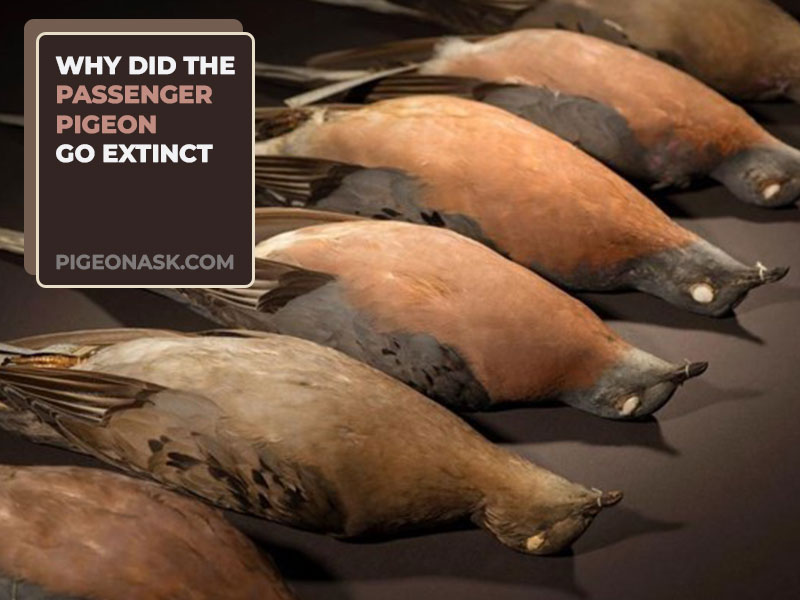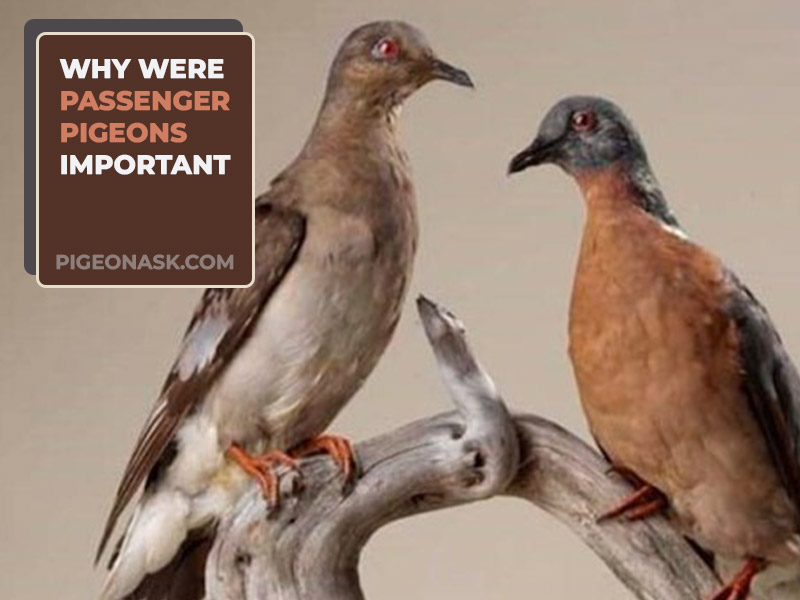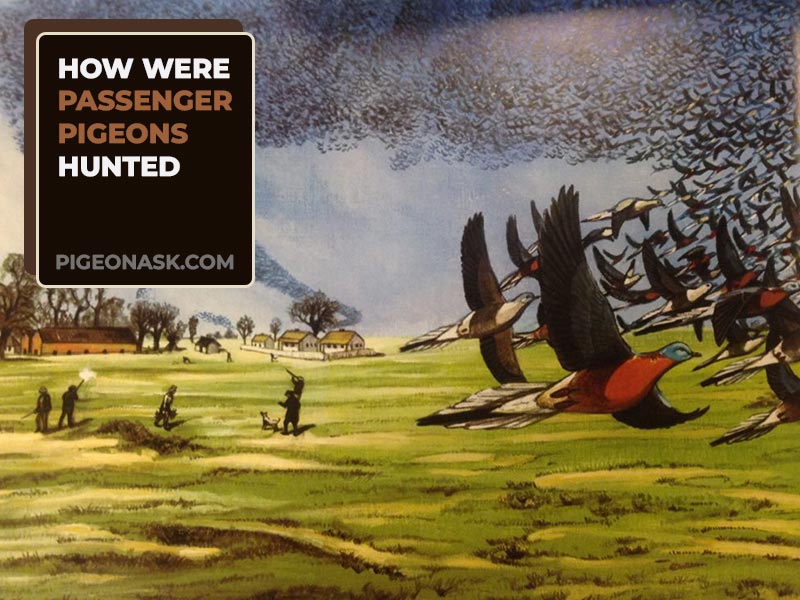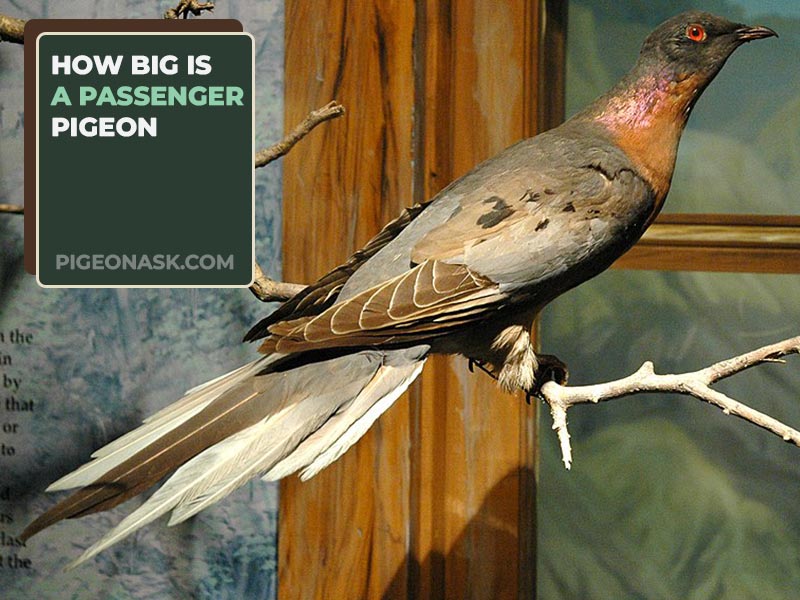Why Were Passenger Pigeons Hunted?
Passenger pigeons were once the most abundant bird species in North America, with a population estimated to be in the billions. However, this species was hunted to extinction in just a few decades.
So, why were these pigeons hunted? The answer may surprise you. People mainly hunted passenger pigeons for food and killed them for sport and fun. Hunting pigeons became very popular, which caused their population to decrease quickly.
But When People tried to protect them, it was too late, and the last one died in 1914, making them extinct.
The passenger pigeon’s story is a cautionary tale about the dangers of overhunting and the importance of conservation. Want to learn more about the fascinating history of these birds and the factors that led to their demise? Read on to find out.
Read more about pigeon blogs:
Why Did the Passenger Pigeon Go Extinct?
Even though the passenger pigeons were always hunted by the people of North America, hunting boomed during the post ‘European’ colonization.

Some of the key reasons behind this once-abundant-species going entirely extinct are discussed below;
01. Hunting Of Passenger Pigeons As A Sport
Not only were they hunted for food, but they were also hunted by professional hunters as game, just as a sport. Due to the lack of regulation in this sector, overhunting could not be prevented.
02. Hunting Of Passenger Pigeons For Trade
They were also hunted to be sold in city markets in exchange for money. This business prospered as more and more people hunted and sold passenger pigeons.
Since the passenger pigeons were a common food source, they were often bought by people with inadequate hunting skills. Hence, further booming the trading business of these birds.
03. Deforestation Of Their Habitat
Another contributing factor to the extinction of passenger pigeons was deforestation. Naturally, without trees to nest on, no bird would be able to survive and increase their population.
As more people settled in North America, more forests were cut down. The passenger pigeons, who only nest and migrate in large flocks, lost their habitat and could not maintain large numbers.
A consequence of deforestation was that the birds would fly over crops and damage the crops with their droppings. Hence, farmers also started killing passenger pigeons out of spite.
All of this together led to the over-hunting of passenger pigeons, and subsequently led to the extinction of the most abundant bird of the 1800s.
Why Were Passenger Pigeons Important?
Once upon a time, passenger pigeons were the most abundant species of bird in the world. They played an integral part in the ecosystem and ensured the diversity of species in the deciduous forests that they resided in.

Hence, they played integral functions in maintaining the diversity of the forests as ecosystem engineers. They were also used as a hunting target and was the food source for the Native americans during that time.
Passenger Pigeons As Ecosystem Engineers
Ecosystem engineers are species that regulate the accessibility of resources to other species, either directly or indirectly.
In the hardwood forests of eastern North America, passenger pigeons played a keystone role which was ensuring canopy disturbances.
As the huge flocks of passenger pigeons moved about, they disturbed the vegetation on the top of the forest, as a result allowing lighter to pass through to the forest bed.
This allowed numerous shade-intolerant trees like oak, and many mammals and birds to thrive. Therefore, they were important in maintaining the diversity of animals in the forest.
Passenger Pigeons As a Food Source
During the time when passenger pigeons were prevalent in huge quantities, they were a prime source of protein for the Native Americans residing in the Southwestern side of America.
It was mainly because the passenger pigeons were present in large numbers that made harvesting them for food that much easier.
One only had needed to pluck a bird from the tree as it was nesting. It was found by historians that Native Americans would pile up passenger pigeons and store large quantities for food.
What Were Passenger Pigeons Used for By Humans?
Passenger pigeons were the protein source for Native Americans that dwelled in the forests of North America. However, they only hunted juvenile pigeons instead of adult ones to prevent the decrease in the abundance of the birds.
The fat obtained from the passenger pigeons was stored and later made into butter or oil to be used in cooking. These were also Native American practices.
Post-colonization of Northern America by European settlements, some populations relied solely on passenger pigeons as their meat source. This accounted for the sudden spike in passenger pigeon hunting post-colonization.
Another use for passenger pigeons was in the agricultural sector. Their droppings were used as fertilizers because they were rich in nutrients.
This was because the diet of passenger pigeons consisted largely of acorns, beechnuts, and seeds. They were also utilized as live targets to trap larger animals in the forest.
How Were Passenger Pigeons Hunted?
The common method of hunting was with rifles. Birds that flew at a lower altitude could be hunted with pointy sticks.
Some hunters baited the passenger pigeons with alcohol-soaked grains. The birds would get dizzy and fall to the ground, after which they were killed or sold.

Some pigeons were even held captive to bait more birds. During their migrating periods, a large number of passenger pigeons were hunted by shooting.
Back in the day, Native Americans used bow and arrow, the most basic of hunting methods, to hunt these precious birds.
How Big Is a Passenger Pigeon?
The average male passenger pigeon was about 15 inches, and the female ones were slightly smaller. The passenger pigeons were said to have streamlined bodies that enabled them to fly at great speeds and have amazing maneuverability skills while flying.

That is because they have long and slender bodies with its tail contributing to most of their length. Their unique tail was wedge-shaped but narrow. With the combination of its small head, the passenger pigeons were very aerodynamic.
What’s very interesting about these sexually dimorphic species of birds is that the males and the females were easily distinguishable due to the difference in feather color.
Where the male passenger pigeon was vibrant with its bronze feathers and grey upper parts, the female passenger pigeon was on the browner side. The females looked duller in color overall.
Final Words
The hunting of passenger pigeons has been a stark reminder of the negative impacts of human interference in nature. These gentle birds, once so abundant that they darkened the skies in flocks, were driven to extinction by relentless hunting by humans.
Not only did this decimate the immense diversity of animal species in North America’s hardwood forests, but it also served as an important warning for us today – when we interfere with nature, there can be dire consequences.
Only through understanding and respect for animal life can we bring about a world where every species is safe from extinction, even if it means taking drastic measures such as banning hunting entirely or creating protected areas away from human interference. Thank you for reading.
Article References:
- Sciencedaily.com/releases/2018/01/180111084953.htm
- Cs.mcgill.ca/~rwest/wikispeedia/wpcd/wp/p/Passenger_Pigeon.htm
- Web.stanford.edu/group/stanfordbirds/text/essays/Passenger_Pigeon.html
- Reviverestore.org/projects/the-great-passenger-pigeon-comeback/
Image Credits:
- Flickr.com/photos (James St. John/Wikipidea)
- Blog.history.in.gov (Julian Pender Hume)
- cbc.ca (Brian Boyle/ROM)
- Forbes.com
